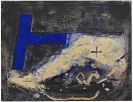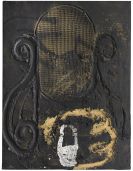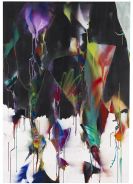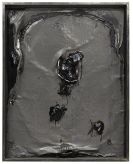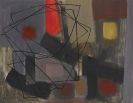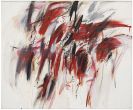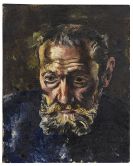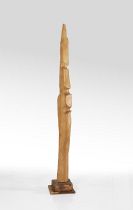
Carl Buchheister
Hannover
1890 -
Hannover
1964
Carl Buchheister studied in Berlin and Bremen at schools for arts and crafts. Furthermore he completed a commercial education followed by a voluntary service at a bank in Hanover. To fulfil his military service, Carl Buchheister volunteered for one year at a field-artillery regiment in Lorraine. At the beginning of world war I., he was drafted. When he had some leisure, Carl Buchheister also painted and drew during that time and more than 100 pencil-sketches came into existence.
After the war he settled as an independent artist in Hanover, where he soon became friends with Kurt Schwitters. From 1923 onwards the first abstract pictures came into existence, a selection of which was shown in 1926 at the Sturm Gallery owned by Herwarth Walden. In 1927 Buchheister formed an artists' union called "Die Abstrakten Hannover" together with artists living in Hanover like Schwitters and Vordemberge-Gildewart.
Moreover, he was a member of a Parisian artists' group called "Abstraction création". In 1933 Buchheister had to abdicate all honorary posts as chairman of artists' groups due to the Nazi-regime. Because of his abstract painting, he was classified "degenerate" and in 1937 some of his works in museums were confiscated and destroyed.
Carl Buchheister was drafted as a captain of the reserve to world war II. After his return from American war captivity in 1945, the artist worked at first withdrawn at his studio. At that time a new form of abstract composition was developed. In 1949 he met the painter Karl Otto Götz, with whom he formed an amicable contact. Works with two layers, paintings which overlap the frame and go beyond it. He met with Edouard Jäger on the occasion of a one man show at the Zimmergalerie Franck in Frankfurt, who introduced him to France. In 1958 Buchheister decided to settle there and spent until 1963 nearly half of time in Emeville and Paris.
Carl Buchheister died in Hanover on 2 February 1964. Numerous exhibitions and honours accompanied Buchheister's productivity, in 1960 he received the First Class Bundesverdienstkreuz and in 1963 he was nominated for the Villa-Romana-prize. His works were represented in numerous public collections, et. al. at the National Gallery in Berlin, at the Tate Gallery in London, at the Solomon R. Guggenheim museum in New York or at the National Museum of Modern Art in Tokyo.
Would you like to sell a work by Carl Buchheister?
Infos for seller
